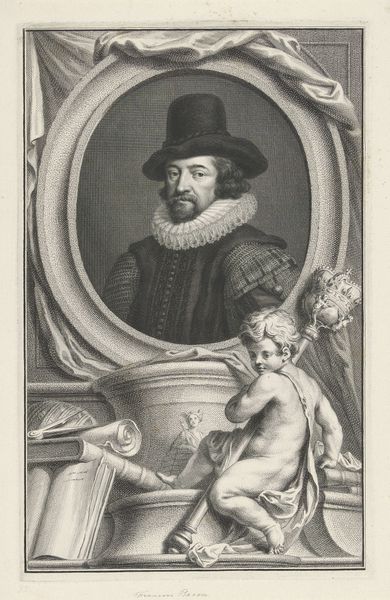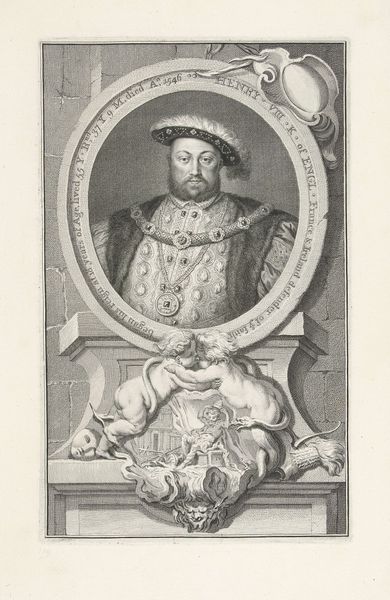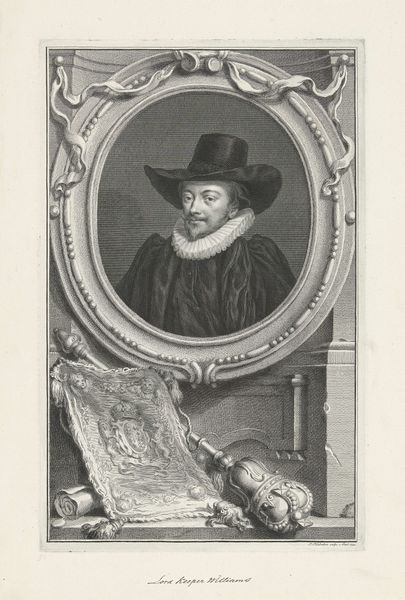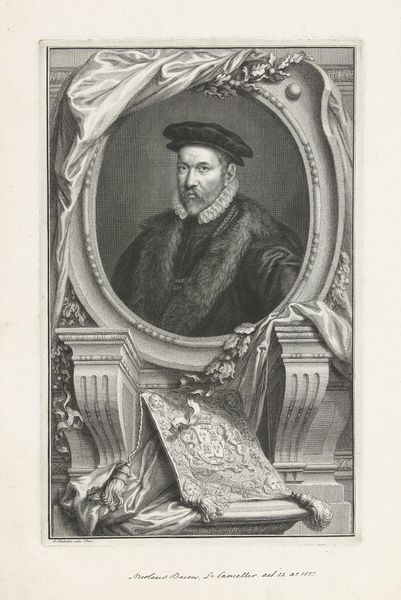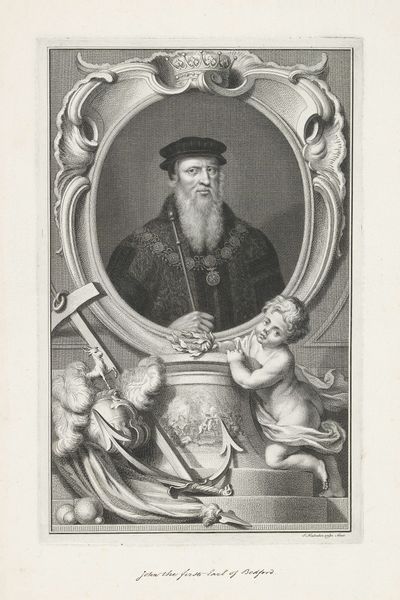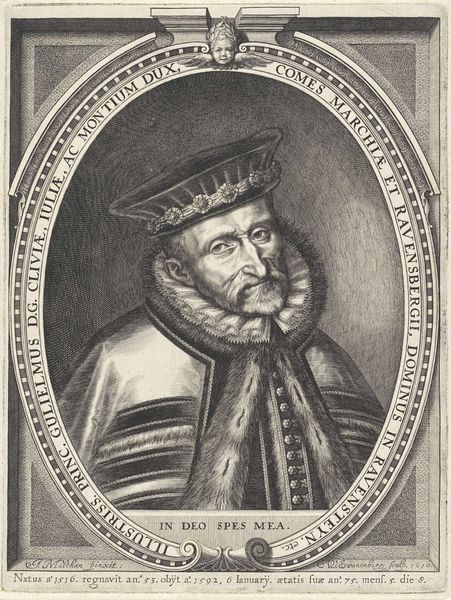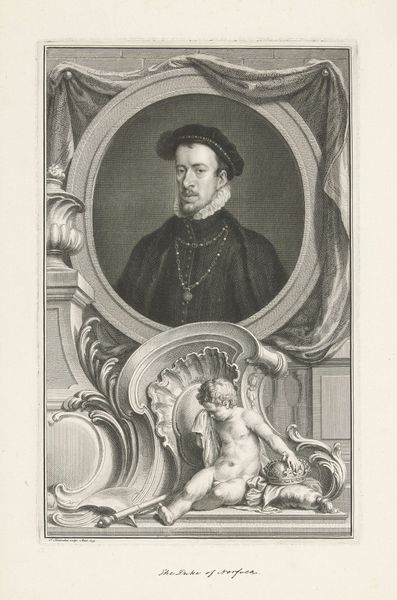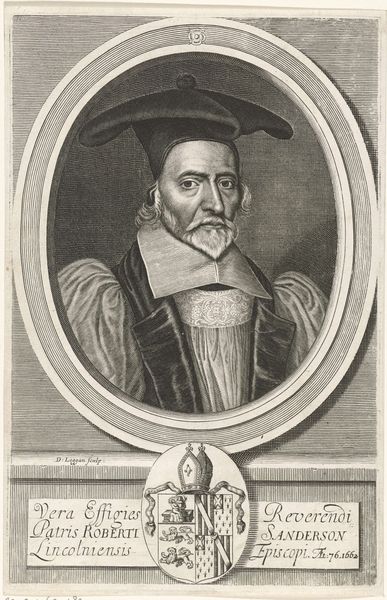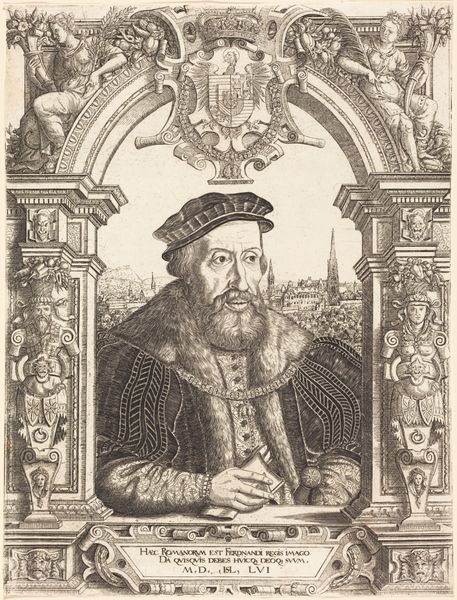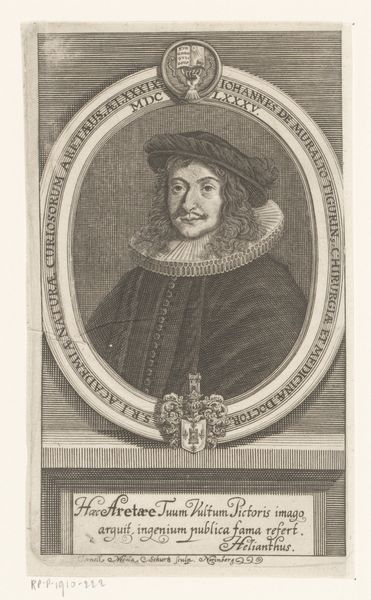
engraving
#
portrait
#
baroque
#
old engraving style
#
figuration
#
portrait reference
#
line
#
portrait drawing
#
history-painting
#
engraving
Dimensions: height 377 mm, width 238 mm
Copyright: Rijks Museum: Open Domain
Curator: Here we have a historical portrait—an engraving, to be precise—titled "Portret van Walter Raleigh" by Jacob Houbraken, dating back to between 1737 and 1739. Editor: It has a striking sense of somber authority, doesn’t it? That dark, feathered hat paired with the intense gaze... and is that cherub graffiti-ing a globe? Quite the juxtaposition. Curator: It is rather strange, isn't it? Houbraken has chosen line engraving, so it’s all about the precise cuts made in the metal plate. Look how he’s varied the density and direction of the lines to create shading and volume. He really draws your eye to the elaborate ruff and doublet. Editor: You can practically feel the labor that went into this. Think of the engraver’s workshop, the tools, the meticulous process… all to create an image ultimately consumed and circulated. This isn’t just a portrait; it’s an artifact of its own making, shaped by social practices and economies. Curator: I feel Houbraken wants us to dwell on Raleigh's complexity—the explorer, the writer, the controversial figure in court, he looks like he is staring down destiny... Editor: The inclusion of that cherub defacing the globe feels deliberate, too. Perhaps it's hinting at the complex relationship between exploration and exploitation—knowledge gained often coming at a cost. The very act of engraving, of capturing Raleigh's image and disseminating it, echoes this impulse to possess and control. Curator: The very clean lines almost evoke a sense of romanticism, but simultaneously, the historical context weighs in—a strange balance that, if you ask me, succeeds in presenting a nuanced perspective of Sir Walter. I'm very impressed that despite being "just" a black-and-white engraving, there is still so much room for subjective interpretation, after all these years. Editor: It pushes us to question the narrative around heroes and conquest, I wonder if at the end of the day, art can push us to reflect upon who holds power, how is that power visualized, and who are we enabling in today’s culture of image consumption.
Comments
No comments
Be the first to comment and join the conversation on the ultimate creative platform.
